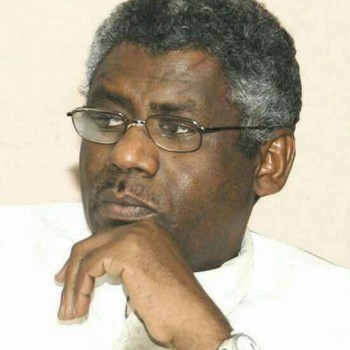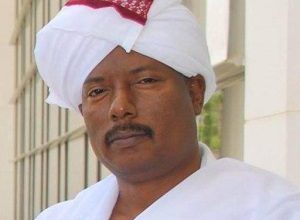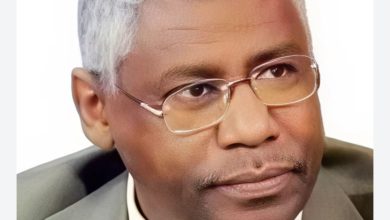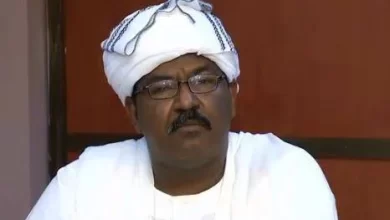Charter Forces…The Way Ahead (1-3)

By: Adil El-Baz
As I see
1
Yesterday, the political scene in Cairo was exciting, as groups from sectors of the Sudanese political movement rushed to meet under one umbrella. Therefore, praise be to God is the must, who brought these political forces out of the clutches of loitering in Cairo’s cafes and into the space of political action, and praise be to God, who protected them against scarcity. It is the same for modesty regarding a unified vision and program. Then praise be to God, who has given a wide sector of Sudanese, east and west, north and south, a single, singing, chirping, and eloquent voice. Yesterday, a spectrum of Islamist and left-wing centrist parties, civil society organizations, Sufi sects, civil administrations, independent figures, and former and current dissidents gathered. It was a vibrant, lively and diverse scene.
2
Before yesterday’s scene, look at the political arena in which dozens of parties are buzzing without grinded flour.. Who are these parties, who are their symbols, what is their vision, and what is their position on the ongoing war? Yesterday we got answers. These are the parties, then, and here are their leaders, and they all agree on (what) a close vision. They called it (the vision of the political and civil forces for managing the transitional founding period) and covered it with their signatures. If the Charter Forces Conference had done nothing else yesterday, it would have been worthy of celebration.
3
Before yesterday, the political space was monopolized by the allies of the Janjaweed. Their movement was raging in African and Arab capitals, and neither the world nor the Africans knew a voice other than theirs. Their conferences and conspiracies were held and dissipated. Meetings of presidents and politicians presented to them their falsehoods and untruthfulness. The media space was abuzz with their lies. The world was almost deceived that there was no one but them. It has political weight or value. They are the only voice expressing the people, and the region and the world almost adopt their position on the war and help them ally with the Janjaweed.
This happens while the political forces that have commonalities and positions quarrel and fight over trifles in a homeland that is falling into the abyss. How do you know what that is?!!
Now, if the movement of the Charter Forces is strengthened, its movement escalates, and it establishes its presence inside the country with continuous, persistent work, the world will realize that there are political groups, entities, and parties that are more and more promising and more popular than the diaspora (Taqadum) and are capable of leading the political movement.. At that time, no one will claim that he has the right to a monopoly for a political action and thus shaping the scene of the transitional period alone.
4
What are the goals of the Sudanese Charter Forces?
According to its statement, it aims to resolve the political crisis, end the war, lay the foundations for a just, comprehensive and sustainable peace, settle the Sudanese crisis, agree on a transitional constituent period to rule the country, reform and rebuild the state apparatus in a way that reflects its independence and nationalism, while ensuring the achievement of the security and stability necessary for the transition to democratic civilian rule.
How can these goals be achieved? The charter says
Through national consensus at a minimum… and what is the path to consensus? Through comprehensive Sudanese-Sudanese dialogue without exclusion, it is the only option for national consensus and reconciliation without negative external interference.
Then the signatories to the charter decided that the transitional period would be a founding period during which the roots of the Sudanese crisis would be addressed through the constitutional conference to resolve the issues of the system and form of government, identity, the social contract and consensus on a permanent constitution for the country that would be approved through a popular referendum.
5
What is noted in this charter is that it answered with a clear vision the questions that have been the subject of controversy since the beginning of the transitional period. This charter presents ideas to address controversial issues. For example, when the charter speaks about the principle of Sudanese-Sudanese dialogue, the question arises: Who is calling for and managing this dialogue and what is its legitimacy? If it is called for and managed by the ruling authority, there are shadows of the military establishment’s attempt to dominate the dialogue and thus its outcomes. So who is establishing the dialogue, calling for it, and managing it now?
The answer provided by the signatories to the Charter created a logical solution, which is for dialogue to be called for and managed through a national committee agreed upon by the parties and this conference
(The Sudanese-Sudanese Dialogue) is the founding authority that establishes the constitutional arrangements for managing the transitional founding period for the post-war period and the transition to the path of democratic civil rule.
The most important feature of this conference is that all political, civil and native components participate in all stages of the dialogue without exclusion. So, the page of “except” has finally been closed and we have progressed to a new horizon… and this horizon must necessarily include “Taqaddum” itself, and this will make the conference table a reality that will accommodate everyone except those who refuse.
6
How did the Charter shape the governance mechanisms, from a Council of Ministers to a Legislative Council to a Sovereign Council?
The Charter proposes that the Sudanese-Sudanese Dialogue Conference select a committee of wise men from eleven national figures known for their integrity, competence, and experience and who are not competing for constitutional positions to choose a list of three people from among the conference’s nominations for the presidency of the Council of Ministers. The Committee of Elders presents the names of three candidates to the Sovereign Council to choose the Prime Minister from among them. The Sovereign Council consists of five military and civilian members, and its legal basis is in the constitutional document.
What is the legal basis on which the Council of Ministers relies in exercising its powers?
The Charter says (The Council of Ministers shall exercise its constitutional and legal powers and authorities in accordance with the existing constitutional situation.).
So that readers do not get confused, I must clarify that according to the view of the Charter forces, the legal and constitutional situation passes through three stages:
The first, on the basis of which governance mechanisms are formed (Council of Ministers, Legislative Council (Parliament) , and the rest of the state institutions), is the Constitutional Document 2109.
The second stage, which begins after the Sudanese-Sudanese Dialogue Conference, is governed by a constitution agreed upon by the conference participants, which is the basis on which the constituent transitional period will be governed.
The final stage comes after the Constitutional Conference, which the transitional government aspires to, establishes the permanent constitution for the country and approves it through a referendum.
The transitional government will convene the National Constitutional Conference, draft the permanent constitution for the country, and approve it through a referendum.
To be continued



